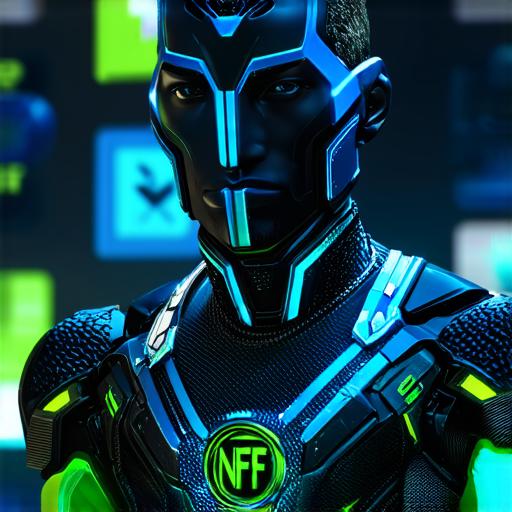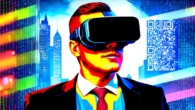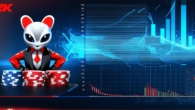
What does the future hold for NFTs
As technology continues to evolve, so too do our understanding of non-fungible tokens (NFTs). NFTs have become an integral part of the digital art world, allowing creators to monetize their work in ways that were previously unimaginable. However, with the rise of NFTs has come a myriad of questions about their future and what it holds.
What are NFTs?
NFTs are digital assets that are unique and cannot be replaced or exchanged with any other asset. They are essentially a type of cryptocurrency that is used to represent ownership of digital items such as art, music, videos, and more. Each NFT has a unique identifier that is stored on the blockchain, allowing it to be easily bought, sold, and traded.
NFTs have already proven to be a game-changer in the digital art world. They have enabled artists to sell their work directly to collectors, bypassing traditional galleries and intermediaries. This has led to a more equitable distribution of wealth and has allowed artists to retain greater control over their work.
The Potential Applications of NFTs
NFTs have the potential to revolutionize a wide range of industries beyond just digital art. Here are some examples of how NFTs could be used:
- Real Estate: NFTs could be used as a form of digital real estate, representing ownership of virtual properties. This could include anything from virtual land in a video game to a digital home in a virtual world.
- Gaming: NFTs could be used to represent items in games, such as weapons, characters, and collectibles. This would allow players to own these items permanently, even if they stopped playing the game.
- Music: NFTs could be used to sell music directly to fans, allowing artists to bypass record labels and streaming platforms. This would give artists greater control over their work and allow them to earn more from their music.
- Sports: NFTs could be used to represent ownership of sports-related items such as tickets, jerseys, and collectibles. This would allow fans to own these items permanently and create a new revenue stream for teams and athletes.
- Art Collectibles: NFTs can be used to sell art collectibles in the form of digital assets that are stored on the blockchain. This will provide artists with a new platform to showcase their work, and also give buyers a unique piece of history that they can own forever.

The Future of NFTs
It is clear that NFTs have already had a significant impact on the digital art world, but their potential applications go far beyond just this field. As technology continues to evolve, we can expect to see even more innovative uses for NFTs in the future.
One thing that is certain is that NFTs will continue to play an increasingly important role in the way we buy, sell, and trade digital assets. As more people become aware of the potential benefits of NFTs, we can expect to see a growing market for these unique digital items.
FAQs
Here are some commonly asked questions about NFTs:
1. What is an NFT?
An NFT is a non-fungible token that represents ownership of a unique digital asset. It is stored on the blockchain, making it easy to buy, sell, and trade.
2. How do NFTs work?
NFTs work by using blockchain technology to create a unique identifier for each digital asset. This identifier is then used to represent ownership of that asset on the blockchain.
3. Who can use NFTs?
Anyone can use NFTs, including artists, collectors, gamers, and more. They are particularly useful for those who want to sell or buy unique digital assets that cannot be easily exchanged with other items.
4. What are some examples of NFTs?
Some examples of NFTs include digital art, music, videos, real estate, gaming items, sports collectibles, and more.
5. How do I buy an NFT?
You can buy an NFT from a variety of platforms, including online marketplaces, digital galleries, and direct from the artist or seller.
6. What are some benefits of using NFTs?
Some benefits of using NFTs include unique ownership, easy trading and buying, and greater control over your digital assets.
7. What is the future of NFTs?
The future of NFTs looks promising, with many potential applications beyond just the digital art world. They are likely to play an increasingly important role in the way we buy, sell, and trade digital assets.
8. How do I store my NFTs?
NFTs can be stored on a variety of platforms, including online marketplaces, digital wallets, and more. It’s important to choose a platform that is secure and reliable for storing your NFTs.
9. What are some common mistakes when buying or selling NFTs?
Some common mistakes when buying or selling NFTs include not doing enough research, failing to read the terms of service, and buying from untrustworthy sellers. It’s important to be cautious when buying or selling NFTs.
10. What are some potential risks associated with NFTs?
Some potential risks associated with NFTs include the possibility of fraud, hacking, and market volatility. It’s important to be aware of these risks and take steps to protect yourself.
Summary
NFTs have already proven to be a game-changer in the digital art world, and their potential applications go far beyond just this field. As technology continues to evolve, we can expect to see even more innovative uses for NFTs in the future. Whether you are an artist looking to monetize your work or a collector looking to buy unique digital assets, NFTs are worth exploring.







